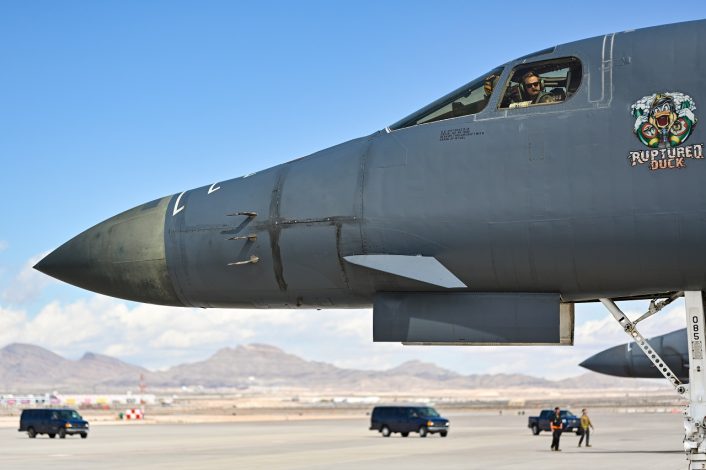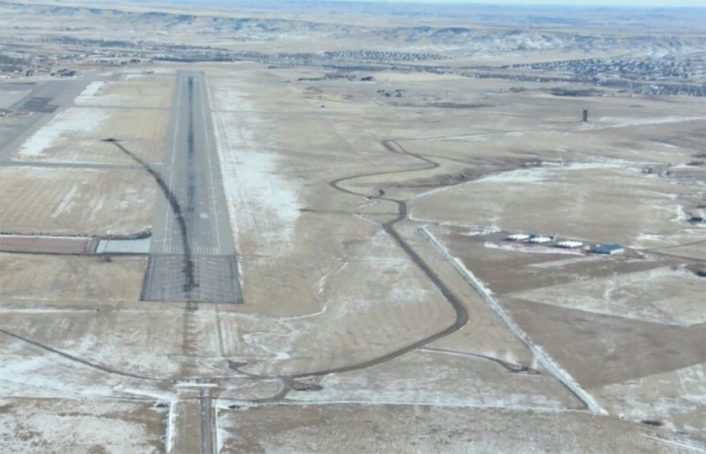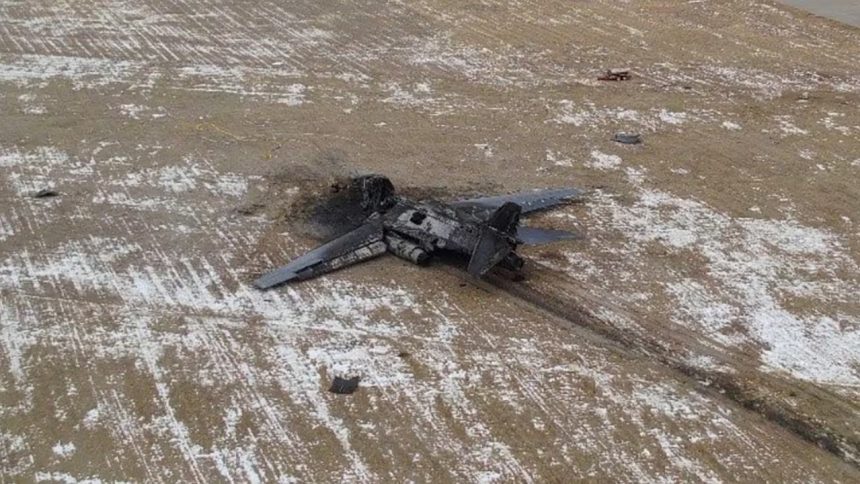While the crew’s failure to properly manage airspeed and altitude was identified as the primary cause, the Accident Investigation Board report also highlighted several contributing factors, including complacency regarding deteriorating airmanship skills.
The Air Force Global Strike Command announced on Jul. 25, 2024, the results of its accident investigation into the Jan. 4 crash of a B-1B bomber at Ellsworth AFB, South Dakota. The crash, which resulted in the total loss of the aircraft and the injury of two crewmembers during the ejection, happened as the aircraft was landing in bad weather at the end of a training mission.
The investigation found many concerning factors, including “poor crew resource management, poor weather conditions, ineffective flight operations supervision, a lack of awareness of airfield conditions, and an organizational culture that tolerated decaying airmanship skills, a lack of discipline, poor communication, and inadequate focus on regulations.”
However, primary cause of the crash was found to be a failure by the crew to properly manage the aircraft’s airspeed and angle of approach. The report also highlights how the aircraft could have been saved, if they had recognized the dangerous situation and reacted accordingly.
In a press statement, the Air Force Global Strike Command stated that the chain of command is in the process of responding to the report and taking the appropriate corrective actions. You can find the complete report here.
The mishap
The aircraft, identified as the B-1B 85-0085 “Ruptured Duck,” was flying with the callsign FELON 02 as the number two of a two ship formation, however both aircraft elected to return earlier from their training mission as weather conditions at Ellsworth continued to worsen. FELON 02 also took off two hours later than planned with maintenance issues, although the report mentions these did not affect the flight.
As they approached the base, FELON flight aircrews discussed the required visibility for the approach collectively. The report mentions that they “erroneously agreed that a visibility-only straight-in approach to Rwy 13 required only a minimum visibility of 1/2 SM, contrary to the 3/4 SM minimum stated in active NOTAM.”
Here started a list of failures, including not acknowledging updated weather information, not referencing the correct NOTAM, and not applying cold weather altitude corrections. The two aircraft then split and started individual ILS approaches to land back at Ellsworth.

File photo of the crashed B-1B, 85-0085 “Ruptured Duck”, during Red Flag 23-2. (U.S. Air Force photo by Staff Sgt. Jake Jacobsen)
During the approach, FELON 02 experienced “performance enhancing” directional wind shear, which increased its airspeed, with the pilots reducing the thrust to compensate. However, when the wind stabilized, the throttle was not adjusted, resulting in a thrust deficient condition.
With the crew failing to cross check the instrument data, the slower speed caused the aircraft to be below the ideal glideslope. The pilots tried to compensate by increasing the angle of attack, approaching the stall onset. The situation worsened with missing callouts and checks.
Vertical velocity increased to 1,800 ft per minute, prompting the pilot to select max afterburner. However, due to the excessive sink rate and late recognition, the aircraft was unrecoverable and out of control, impacting the ground 100 ft prior to the overrun for Rwy 13.
The B-1B continued to skid along the ground and onto Rwy 13, continuing for approximately 5,000ft along the runway with a slight left trajectory, and eventually came to a rest between two taxiways on the infield. The aircraft fuselage was engulfed in flames, with the aircraft deemed a total loss worth over $ 450 million.
The investigation findings
The Accident Investigation Board found that the cause of the mishap was the lack of an effective composite crosscheck by the crew of FELON 02. “The MC [Mishap Crew, ndr] failed to conduct an effective crosscheck by not recognizing the MA’s [Mishap Aircraft] decreasing airspeed, accelerating descent rate, and deficient flight path,” mentioned the report.
The report also mentions that the Board reconstructed in the simulator that the aircraft would have been recoverable had a go around been initiated 20ft below the decision altitude. In the simulator, the go around was initiated before the excessive sink rate development, with the descent arrested at 50 ft and the aircraft safely climbing away.

Additionally, the Accident Investigation Board found five substantially contributing factors, listed here in an extract from the report:
- The crew’s failure to perform standard crew resource management;
- Adverse weather conditions which included undetected wind shear that contributed to rapid shifts in the MA’s airspeed on final approach and limited ceiling visibility conditions influencing a change in landing runways;
- Ineffective flying operations supervision, as reflected by one person acting as both Supervisor of Flying and Operations Supervisor, being task saturated, having poor situational awareness of the airfield environment, and being unaware of active Notices to Airmen making the executed approach unauthorized;
- The lack of awareness of airfield conditions, particularly amongst aircrews and their leadership of weather sensor outages that prevented requisite personnel from having accurate visibility readings for Runway 13;
- An unhealthy organizational culture that permitted degradation of airmanship skills, inadequate focus on governing directives, lack of discipline, and poor communication regarding airfield conditions and hazards.









